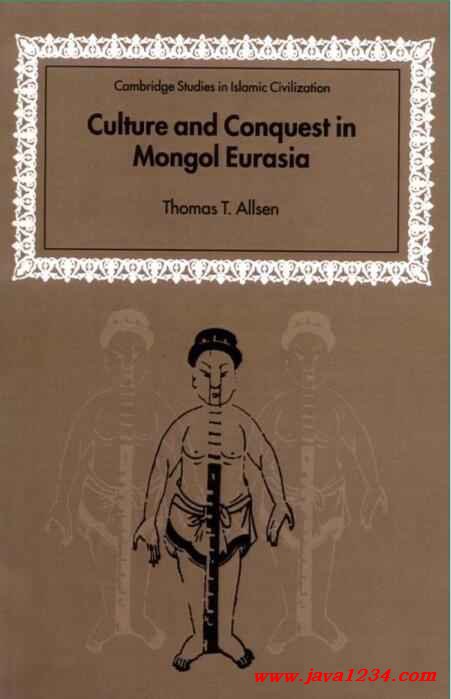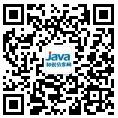| 失效链接处理 |
|
Culture and Conquest in Mongol Eurasia PDF 下载
本站整理下载:
相关截图:

主要内容:
The study of cultural contact and exchange is intimately connected to the
question of agency. Culture, of course, can be transmitted by a number of
mechanisms – commodities, ideologies, literary works – as well as people.
Material culture, transported as trade, tribute, or booty, can diffuse artistic
motifs and technology over great distances. Texts, particularly religious texts,
also convey culture over time and space and most particularly between large-
scale, urban-based civilizations. The extensive corpus of Chinese translations
of the Indian Buddhist canon well illustrates this phenomenon. 1 In the
Mongolian era, the fourth mechanism, direct human agency, assumed, as
already argued, a very special importance in East–West cultural communica-
tion. Given the Mongols’ penchant for moving imperial personnel, subject
peoples, and specialists from one cultural zone of the empire to another, there
were innumerable face-to-face encounters between individuals and commu-
nities of the most diverse ethnic, linguistic, and religious backgrounds. In this
part of the study, we will investigate the major “brokers”in medieval Eurasian
cultural history.
By far the most famous of these intermediaries is Marco Polo. As is well
known, from his own day to the present, his travels have been the center of
controversy; indeed, many deny that the Venetian ever set foot in China. 2 His
defenders, naturally, have tried to confirm his accounts by detailed geograph-
ical–historical commentaries and most particularly by seeking references to
his name in the Chinese sources of the Yuan era, which are studded with
foreign names, Turkic, Iranian, Muslim, and Tibetan, as well as Christian.
Efforts to find Marco Polo in the Asian sources were inaugurated in 1865
by the French scholar Pauthier who was the first to identify the Venetian with
59
1
Walter Fuchs, “Zur technischen Organisation der Übersetzungen buddhischer Schriften ins
Chinesische,” Asia Major 6 (1930), 84–103.
2
My own view is that Marco Polo was in China and that his travels are a valuable source on med-
ieval Eurasia. For recent and persuasive defenses of this position, see Igor de Rachewiltz,
“Marco Polo Went to China,” Zentralasiatische Studien 27 (1997), 34–92; Jørgen Jensen, “The
World’s Most Diligent Observer,” Asiatische Studien 51 (1997), 719–28; and Jean-Pierre Voiret,
“China ‘Objektiv’ Gesehen: Marco Polo als Berichterstatter,” Asiatische Studien 51 (1997),
805–21.
a certain Po-lo mentioned in the Yuan shih. Well into the twentieth century
some scholars, e.g., Charignon in his biography of Marco Polo, clung to this
identification. Chinese savants also made this connection. T’u Chi, a noted
historian of the late Ch’ing to the early Republican era, thought this Po-lo was
Marco Polo (Ma-k’o Pao-lo) and prepared a biography of the “Venetian” on
that assumption. 3
This identification of the two names, made repeatedly, poses many serious,
and indeed insurmountable problems, historical and philological. In the first
place, as Olschki points out, it is probably mistaken to search for Marco Polo
under his family name since the regular practice of the contemporary Chinese
sources is to use first names or biblical names – Luke (Lu-ho), Nicholas (Nieh-
ku-la), etc. – for the Mongols’many Christian servitors of the Latin, Greek,
and Nestorian rite. 4 His belief is very likely correct: if any of the Polos come
to light in the Yuan accounts, it will be under their Christian names, not their
surnames.
Second, and irrespective of the problems of nomenclature, the Po-lo of the
Yuan shihis most certainly another historical personage, a Mongol who, as we
shall see, has his own legitimate claims as a cultural broker of great impor-
tance. This identification was first made by the great French orientalist Paul
Pelliot. As early as 1914, and thereafter on many subsequent occasions, Pelliot
demonstrated that the Po-lo of the Chinese texts was to be equated with the
Mongolian name Bolad, not Marco Polo, and that this same person appears
in the Persian histories under the name Pulad/Fulad, that is, the envoy of
Qubilai, who arrived in Iran in 1285 in the company of ¤Isa kelemechi. 5 At
about the same time, Japanese scholars, working quite independently, came to
this same and quite correct conclusion. 6
Since his name has been a source of so much misunderstanding, it will be
helpful to establish its various forms from the outset of our examination of his
life and times. Po-lo is the Chinese transcription of the Mongolian bolad and
the Uighur bolod. 7 Indeed, our Bolad bore a most appropriate name for a cul-
tural intermediary between China and Iran. His personal name is the
Mongolian form of the Persian pulad/fulad, “steel.” His title, chınksank in the
Persian sources, as already noted, is the Chinese ch’eng-hsiang, “chancellor,”
a very high-ranking position in the Yuan government. 8 Lastly, his honorific,
aqa, Mongolian for “elder brother” or “uncle,” is often used as a term of great
respect for non-kinsmen. 9 In his case, its use certainly declares his membership
60 Intermediaries
3
T’u Chi, Meng-wu-erh shih-chi (Taipei: Shih-chieh shu-chü, 1962), ch. 117, p. 1b.
4
Leonardo Olschki, “Poh-lo: Une question d’onomatologie chinoise,” Oriens 3 (1950), 183–89.
5
Paul Pelliot, “Chrétiens d’Asie centrale et d’Extrême-Orient,” TP 15 (1914), 638–40, and Paul
Pelliot, “Review of Charignon, Le livre de Marco Polo,” TP 25 (1928), 157–64.
6
K. Enoki, “Marco Polo and Japan,” in Oriente Poliano (Rome: Istituto Italiano per il Medio ed
Estremo Oriente, 1957), p. 38.
7
Cleaves, “Mongolian Documents,” 46–47, note 9.
8
Chingsang is the Mongolian form. See SH/Cleaves, sect. 132, p. 62 and note 9, and SH/de
Rachewiltz, sect. 132, p. 56.
9
Francis W. Cleaves, “Aqa minu,” HJAS 24 (1962–63), 64–81.
|




 苏公网安备 32061202001004号
苏公网安备 32061202001004号



